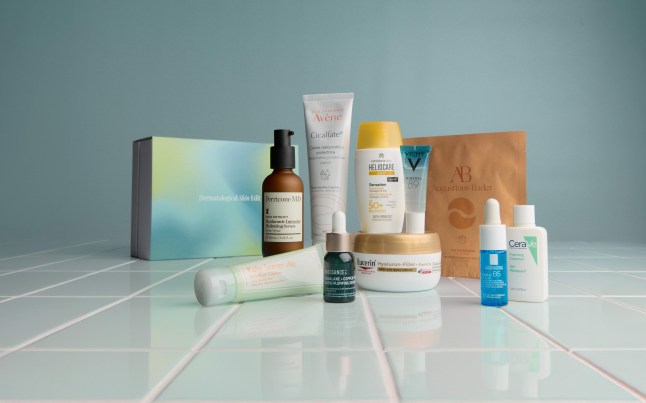28 Sep, 2025 | Admin | No Comments
'My boyfriend and I had sex at UK's last raunchy cinema while strangers watched on'

Nestled in Huddersfield is the last dedicated porn cinema in the UK, known as the Empire Cinema Club. One couple visited to experience it for themselves as men watched them get intimate
27 Sep, 2025 | Admin | No Comments
Stop dismissing Cava as just cheap fizz — it deserves more respect


Metro journalists select and curate the products that feature on our site. If you make a purchase via links on this page we will earn commission – learn more
I want you to forget everything you think you know about Cava.
I’m going to let you in on an industry secret, while many shoppers breeze straight past the Cava and opt for Prosecco, the former is actually the go-to for so many wine experts.
It’s even sometimes known as ‘the wine industry’s best kept sparkling secret’.
That’s because Cava is actually the world’s most difficult-to-produce sparkling wine and it also delivers the best value for money of any fizz.
The drink is currently going through a bit of a rebrand to highlight just how great it really is. Here’s everything you need to know about it…
Where and how is Cava made?
Around 95% of Cava production is concentrated around the Comtats de Barcelona, in the northeastern Penedès region of Catalonia in Spain. The municipality is called Sant Sadurní d’Anoia (san-sad-ur-ni-dannoy-a), aka ‘The Capital of Cava’, where they’ve been producing wine since 1872.
It can also legally be made in other regions around Spain, including Rioja and Valencia.
It’s not the same as Prosecco, which is made in is from northern Italy, in a tank and then sold immediately, hence it goes flat quickly.
Cava is made in the same way as Champagne, where they make a base wine by fermenting and blending three indigenous grapes from the region, each with unique flavours; Parellada (citrus and white flowers), Xare-lo (pear and melon) and Macabeo (lemon and almonds).
The base wine is bottled, with the addition of sugar and yeast, to kick start a second fermentation. This creates CO2 as a bi-product, introduced into the wine in the form of bubbles. The wine is then left to mature on the dead yeast (for added flavour and texture) for a minimum of nine months, a sugar solution is added (or not) before sealing it with a cork and a wire cage (the muselet).

Why does Cava deserve more respect?
Because, in response to Cava being seen as a cheap and cheerful party fuel, D.O. Cava regulatory board (D.O. means designation of origin) have massively tightened up their rules on producing it. All stages of the winemaking process are hyper-carefully monitored, from production through to labelling.
And now, in a move unprecedented by other wine producing areas, top-end Cavas have achieved an 100% organic status, where no pesticide, herbicide or fungicides are used, making it an altogether cleaner and more sustainable wine style.
These elite bottles are called Cava de Paraje Calificado, and are the pinnacle of Spanish sparkling winemaking.
They are single-vineyard (only produced from grapes grown in one vineyard), sourced only from exceptional vineyards and aged for a minimum of 36 months. They have all the patience, pedigree and craftsmanship you would expect from a prestige champagne, not to mention the complexity, all for half the price.
A notch down, and you have Cavas de Guarda Superior, which includes Reserva (minimum of 18 months ageing) and Gran Reserve (minimum of 30 months ageing). This quality level was introduced in 2022, and grapes must be hand-harvested and only vineyards established a minimum of 10 years ago can produce them.
So, it’s easy to see that Cava has the most demanding regulations for any sparkling wine on Earth. Which just goes to show, Cava isn’t trying to be Champagne, it’s not trying to be Prosecco, it’s trying to be the best version of Cava.
With that in mind, here are some bottles you should try, including bargains, sustainable sips and rich fizz:
Baron Amarillo Cava Brut, £5.75, Aldi

Even at the basic end of the spectrum, Cava is exceptional value for money. A lovely, lean and dry fizz with enticing notes of lemon thyme and fennel seed. Aldi’s is the perfect gateway Cava if you’re not familiar with the style.
Vilarnau Organic Brut Reserva, £9.80 (save £3), Ocado

I can’t not mention the eye-catching, Miró-inspired bottle, representing vibey Barcelona. This organic Cava (they’ve been fully organic since 2015) is produced by Vilarnau, one of the Wineries for Climate Protection. Heck, even the winemaker rides around her vineyards on a pushbike. The wine itself is bright, clean and dry with lemon sherbet notes and a well-seasoned, oyster shell salinity.
Vilarnau Rosé Delicat Reserva, £10 (save £3), Ocado

This glowy, rosé Cava is made by a particular method, called saignée, literally meaning ‘bleeding’. This involves draining, or bleeding off, the juice from a tank of pressed red grapes, ready to ferment into a rosé. The result is a far more intensely-flavoured wine, in this case, with cherries, wild strawberries and raspberries with a balancing almond skin finish.
Mas Macià Brut Nature Reserva, £14.99, Drinkwell.com

Dosage is the sugar solution that’s added to sparkling wine before the cork is pushed into the bottle. This decides whether the wine will be dry or sweet, with most of us favouring a Brut style (6 – 12g of sugar per litre). This sparkling has no dosage added, making it deliciously bone dry, super lean with flavours of pear, fennel, herb salt and a green apple finish.
Ars Collecta Codorniu Blanc de Blancs Reserva 2021, £16 (save £2), Ocado

Codorniu is the oldest Cava house in existence, and also one of the most famous. This sits a few notches above their widely-available bottles; a fully-organic, Reserva-level Cava with the addition of Chardonnay. The latter grape gives the wine a noticeable creaminess, with rich and complex flavours of russet golden apples and pears, fennel, sea mist and lemon salt.
Pere Ventura Tresor Gran Reserva 2021, £21, The Great Wine Co

One of my favourites, this is a Gran Reserva Cava with a minimum ageing of 36 months. Bear in mind that an equivalent champagne or English sparkling would be around the £40 mark, minimum, so there’s lashings of value for money here. It’s bright and saline with green apple, oyster shell and anise-flavoured bubbles, which are noticeably refined and ‘champagne-like’ through its extended ageing.
Looking for more expert drinks content?
If you count yourself a purveyor of the finer things in life, Metro’s Drink Up column is where you need to be.
Immerse yourself in the world of good drink, fronted by industry expert Rob Buckhaven – a place for readers to whet their whistle with the latest and greatest in the world of drinks. From unpacking the best supermarket wines from Aldi, Tesco and Lidl, to introducing audiences to the wallet-friendly Cremant out-bubbling the fanciest of French Champagnes (or the best wines to drink after sex), and finding out what it’s like to go on a bar crawl with Jason Momoa, this is a haven for those who love to celebrate.
Stay ahead of the curve as Rob plucks from the vines the wines of the season and the spirits you need to know about; speaking with experts and mixologists while unpacking the latest concoctions, finding the best non-alcoholic options for those looking to moderate, discovering the best food pairings for your drops, and going up against the latest TikTok chatter to demystify the liquid landscape.
What are the best drinks to take to a summer picnic?
Wine that you should never serve at a wedding
Do you have a story to share?
Get in touch by emailing MetroLifestyleTeam@Metro.co.uk.
27 Sep, 2025 | Admin | No Comments
Burgundy is autumn’s biggest fashion trend – these are the items we’re shopping


Metro journalists select and curate the products that feature on our site. If you make a purchase via links on this page we will earn commission – learn more
Move over butter yellow, it’s autumn and there’s a new trending colour to obsess over.
It’s rich, it’s elegant, and it somehow goes with everything – yep, burgundy is the colour of the season and it’s all over the high street just in time for the cooler weather.
The trend took hold on the AW25 runways back in spring, with designers like Gucci, Prada and Victoria Beckham all showcasing deep, wine-stained hues.
Celebrities have been spotted embracing the trend too with Beyoncé uploading photos celebrating her 44th birthday to Instagram dressed in a custom sheer burgundy gown from Dolce & Gabbana.

But what makes burgundy feel fresh is its versatility. It has all the warmth of red, without the boldness, and pairs beautifully with wardrobe staples like camel, navy, grey and black.
Whether you need a new winter coat or you’re shopping for a new pair of trainers, burgundy is THE colour to go for.
If you’re just browsing and need some inspiration though, just scroll down for our round up of the best burgundy buys on the high street right now.

Adidas Originals Handball Spezial Shoes
Cult-favourites, the Adidas Originals Handball Spezial’s come in a gorgeous maroon shade with contrasting cream white stripes with gold metallic detailing. With a premium suede upper and classic gum sole, these low profile trainers can be dressed up or down depending on your outfit.

New Look Red Checked Long Sleeve Shirt
Nail the preppy trend and the burgundy trend with New Look’s Red Checked Long Sleeve Shirt. Featuring an all-over red check print, this laid-back staple is designed with a relaxed fit, chest pocket, button front, and a curved hem. It’s perfect for layering under a chunky knit on casual days.
Ready to wave goodbye to the butter yellow of summer and embrace the burgundy trend of autumn? Now’s the perfect time to invest in these versatile pieces.
Follow Metro across our social channels, on Facebook, Twitter and Instagram
Share your views in the comments below
26 Sep, 2025 | Admin | No Comments
This £50 beauty box is packed with £229 worth of expert-approved skincare
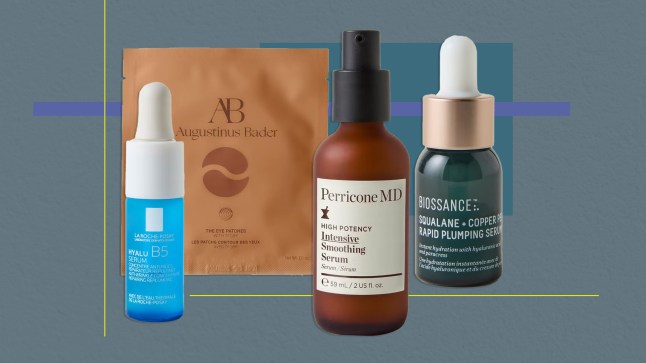

Metro journalists select and curate the products that feature on our site. If you make a purchase via links on this page we will earn commission – learn more
2025 is all about prioritising skin health, and if you’ve been on the hunt for products designed to do your skin good then you’ll want to snap up this new edit from LOOKFANTASTIC.
Filled to the brim with expert-approved, targeted skincare solutions to help you enjoy your best skin ever, the LOOKFANTASTIC Dermatological Edit should be at the top of your shopping list if smoother, clearer, healthier skin is on your wish list.
Worth over £229 but priced at just £50, this new body and skincare edit is the perfect way to explore a selection of best-selling, clinically proven brands and products made with results in mind.
With top-selling brands inside such as Augustinus Bader and Biossance, this beauty box is a total steal for this price, too.
Inside you’ll find six full-size and four deluxe-size products from brands including Augustinus Bader, Perricone, Biossance and so much more, making it an excellent way to try out pricier formulas without splurging on full sizes.
One product we’re blown away by is the Perricone MD High Potency Intensive Smoothing Serum, which is worth £83 on its own – £33 more than the price of the box itself.
Formulated with a high concentration of niacinamide, this skin-smoothing serum works to minimise the look of imperfections, including rough, uneven texture, enlarged pores and crepiness, leaving skin feeling instantly soft.
Another product we’ve got our eye on are The Eye Patches from luxury skincare brand Augustinus Bader, worth over £19 usually.
These top-rated eye masks have been formulated with a potent mix of ultra-smart ingredients to hydrate, illuminate and smooth the look of wrinkles in just one use.
What’s in the LOOKFANTASTIC Dermatological Edit?
- Avene Cicalfate+ Restorative Protective Cream 100ml (full size) – worth over £16
- Eucerin Hyaluron Filler + Elasticity Body Cream 200ml (full size) – worth £26
- Kate Somerville ExfoliKate Cleanser 50ml (full size) – worth £19
- Perricone MD High Potency Intensive Smoothing Serum 59ml (full size) – worth £83
- Augustinus Bader The Eye Patches 1pc (full size) – worth £19
- Heliocare 360 Sensation SPF 50ml (full size) – worth £31
- La Roche-Posay Hyalu B5 Serum Anti-Wrinkle Concentrate Serum with Hyaluronic Acid 10ml (deluxe-size) – worth £15
- Biossance Copper Peptide Rapid Plumping Serum 12ml (deluxe-size) – worth over £12
- CeraVe Foaming Cleanser 20ml (deluxe-size) – worth over £1
- Vichy Mineral 89 Hyaluronic Acid Booster Serum 10ml (deluxe-size) – worth over £5
Suffering from dry, fussy skin? The Avène Cicalfate+ Restorative Protective Cream (worth over £16) acts as a film-like layer over the skin, nourishing and soothing the appearance of dryness and helping to protect it from external aggressors.
Whether you’re looking to stock up on your most-loved formulas or try out some expert-approved products before committing to them full price, the LOOKFANTASTIC Dermatological Edit is a beauty box you’re going to want in your basket ASAP.
Follow Metro across our social channels, on Facebook, Twitter and Instagram
Share your views in the comments below
26 Sep, 2025 | Admin | No Comments
From butter dishes to makeup bags and candles – the 24 items a shopping expert is buying this weekend


Metro journalists select and curate the products that feature on our site. If you make a purchase via links on this page we will earn commission – learn more
Autumn started officially this week, which means we no longer have to feel guilty about saying no to nightsout – huzzah!
And you know what we’re going to do with the money saved? Spend it on gorgeous pieces, handpicked by our shopping expert this week of course!
Yes, your next Trend Trove edition is here, packed with the news you need to know about, and all the gorgeous bits you might want to buy – because we definitely are.
From candles to butter dishes, makeup bags to the latest Dyson innovation and a little cheesy delight, there’s something for everyone, as always.
As for the news you need to know? Well, for this weekend only SHEIN has come to town! Yes, SHEIN is bringing serious style energy to AW25 with its new ‘That New Fit Energy’ campaign, spotlighting trend-led pieces from brands like Missguided, Glowmode, and MOTF. From sleek tailoring and standout eveningwear to curve collections and homeware, the edit has something for everyone. Shoppers can get a first look at the collection at SHEIN’s immersive Oxford Street pop-up from September 26–28, complete with glam stations, giveaways, and interactive experiences.

For the makeup and coffee lovers, Black Sheep Coffee is teaming up with Rimmel London this October for a beauty-meets-brew moment you won’t want to miss. On October 3, their Battersea store gets a full glam takeover to celebrate Rimmel’s new Cappuccino-inspired make-up line – think £1 collagen cappuccinos, giveaways, TikTok zones, and a full day of beauty-fuelled fun. Plus, lucky guests can bag a limited-edition mailer packed with coffee goodies and Rimmel’s latest lip and eye essentials.
Talking of coffee, Nespresso and social enterprise Change Please are serving up coffee with a cause in Covent Garden. From October 1–10, their pop-up van will be pouring barista-made brews daily, with every cup supporting Change Please’s mission to end homelessness. To mark International Coffee Day on October 1, Londoners can grab a free coffee from 10am–5pm – because great coffee really can change lives.
Olympic legend Dame Denise Lewis is redefining midlife confidence as the new face of Coco de Mer’s Icons collection. At 53, she’s fronting her first-ever lingerie shoot, celebrating strength, sensuality and self-assurance in a powerful campaign that proves women aren’t fading – they’re rising. The all-black collection, crafted from luxe French lace and silk, launches alongside Denise’s empowering message: confidence has no age limit. And wow, she looks sensational!
Oh, and if you are obsessed with Jameela Jamil as much as we are, she’s giving fans the chance to shop straight from her wardrobe as she teams up with Vinted and Oxfam for a special second-hand fashion drop. Launching earlier this week, the edit follows her appearance at the Style for Change runway show for Second Hand September, with pre-loved gems from Issey Miyake, Reformation and Kate Spade up for grabs.

For the music lovers, O2 Priority members can now snap up 2-for-1 tickets to Sofar Sounds gigs, saving around £26 per show – perfect for date nights, mate nights or family hangs. Available via the Priority app until October 19, the offer is part of Virgin Media O2’s mission to bring customers closer to unforgettable live music moments, with added perks like early ticket access, VIP extras and exclusive rewards.
Still with us? Good. Because here’s all the items from the high street that you’ll want to get into your basket asap!
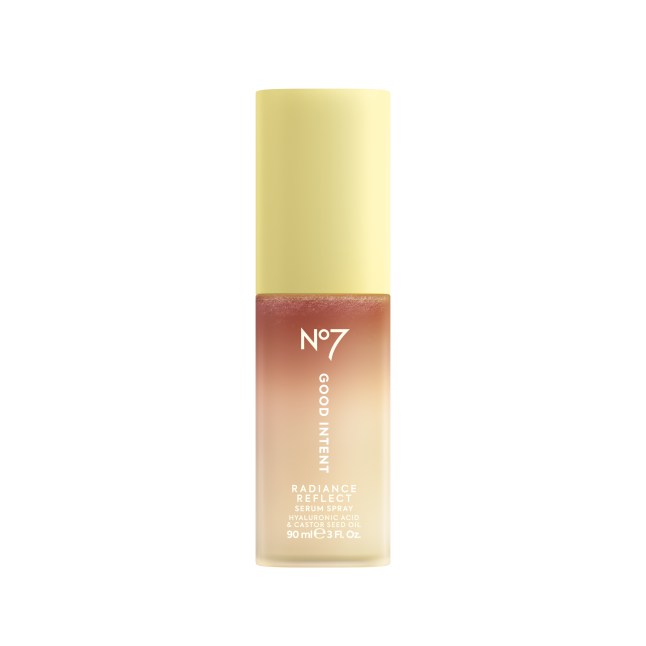
No7 Good Intent Radiance Reflect Spray Serum
Dry skin doesn’t stand a chance with the new Good Intent Radiance Reflect Spray Serum. A few spritzes of this fine mist delivers an instant hit of hydration and glow. It’s great for using before your skincare for an added boost of moisture or over makeup throughout the day if you need a quick pick-me-up.

M&S Autograph Pure Cotton Striped Pyjama Set
Crafted from 100% cotton, this PJ set is lightweight, breathable and gentle on the skin. The pyjama shirt boasts long sleeves, a smart collar and button front fastening. It also offers a straight relaxed fit. The bottoms are long length, are cut on a wide leg, and feature a drawstring waist for a secure fit. Available in UK sizes 6 to 22.

River Island Red Bar Top Patent Clutch Bag
The River Island Red Bar Top Patent Clutch Bag is a bold, glossy red clutch with a sleek bar top detail. It features a fold-over flap with a stud fastening, an adjustable strap for versatile wear, and a compact design ideal for carrying essentials. Stylish and practical, it’s perfect for day-to-night dressing.

ASOS DESIGN Denim Button Down Rugby Top in Mid Blue
The ASOS DESIGN denim button down rugby top in mid blue is a relaxed, rugby-inspired shirt made from 100% cotton denim. It features a spread collar, partial button placket, long sleeves, and a chest pocket, offering a classic look with a casual twist.
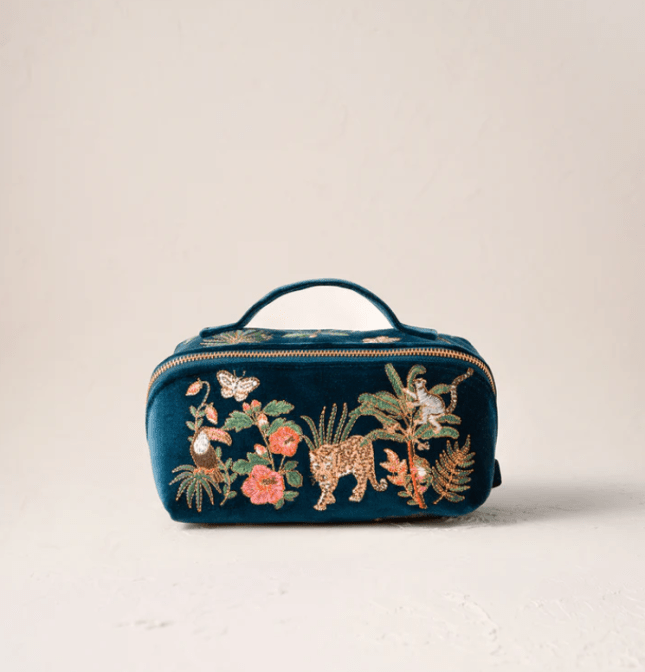
Elizabeth Scarlett Tropical Rainforest Open Flat Makeup Bag
No more rummaging – this clever makeup bag lays flat to reveal your full routine in one beautifully organised view. Embroidered with prowling leopards and tropical threads on a midnight blue base, it’s as stylish as it is practical. Plus, 2% of annual sales go towards wildlife conservation, so you’re giving back while getting ready.
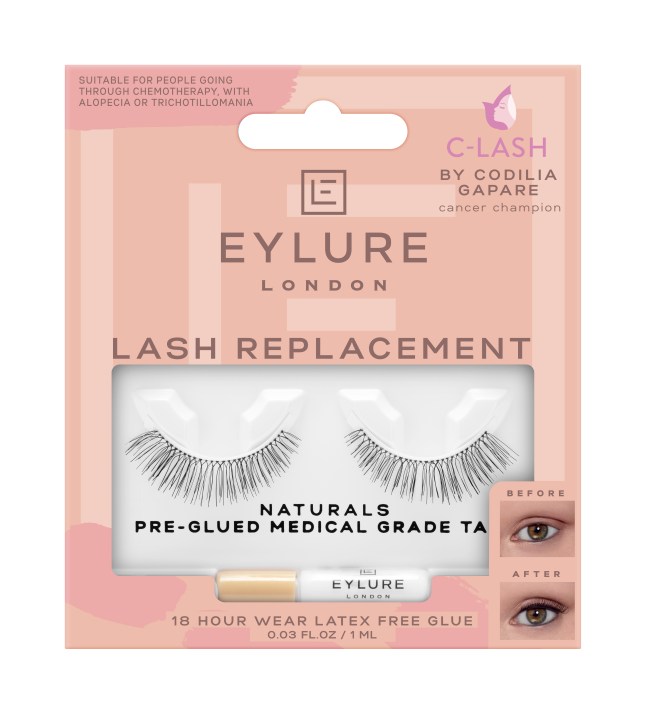
Eylure C-Lash Naturals
Eylure’s C-Lash Naturals are designed with a soft, flexible invisible band that makes lash application easier for everyone – especially those experiencing lash loss. Created by Codilia Gapare, the lashes offer a secure, all-day hold and a confidence boost, proving that beauty routines can be empowering at any stage.
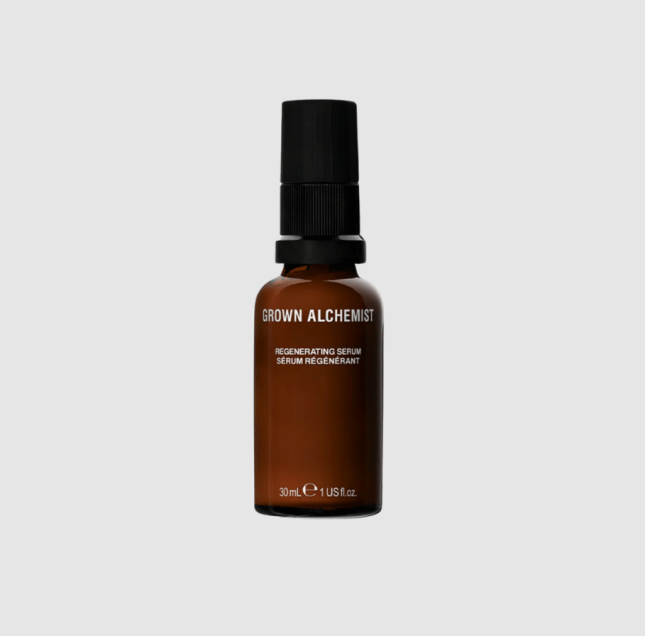
Grown Alchemist Regenerating Facial Serum
Give your skin a daily dose of hydration with this lightweight Regenerating Serum. Packed with polypeptides and rambutan, it smooths fine lines and boosts radiance for a softer, more youthful-looking glow. Gentle enough for morning and night, it’s especially ideal for mature or dehydrated skin types.
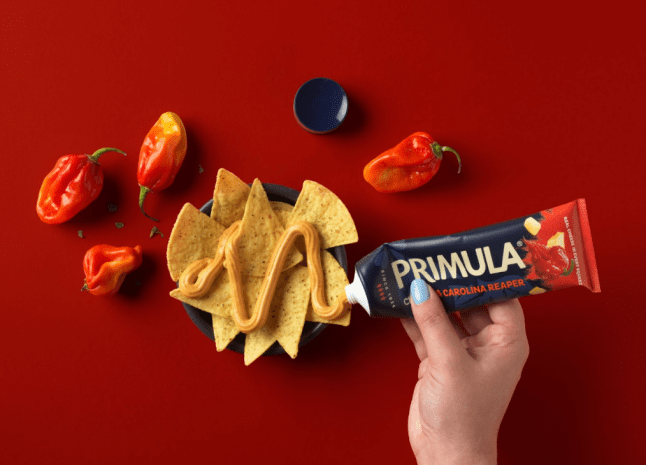
Primula Cheese & Carolina Reaper
Primula’s new Carolina Reaper cheese spread is not for the faint-hearted. Smooth, creamy and packing serious heat, it’s rated four chillis strong and lands in Iceland stores nationwide from September 19 for just £2 a tube. Spice lovers, be quick – once it’s gone, it’s gone!
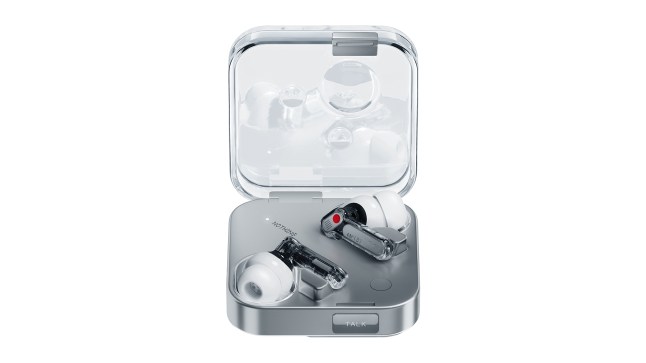
nothing Ear 3
The Nothing Ear (3) earbuds combine cutting-edge audio with sleek design. They feature adaptive noise cancellation, upgraded 12mm drivers for rich sound, and a unique Super Mic built into the case for crystal-clear calls. With up to 38 hours of battery life, wireless charging, and support for high-res audio via LDAC, they’re built for all-day use. The earbuds also include ChatGPT integration via the Nothing X app and are housed in a transparent, eco-conscious case made from recycled aluminium.

Dyson V16 Piston Animal
The Dyson V16 Piston Animal is Dyson’s most powerful cordless vacuum yet, delivering up to 315AW of suction with smart features like adaptive cleaning, hair-detangling brush bars, and built-in dust sensors. It includes a wet cleaning head for hard floors, a bin that compresses debris to hold up to 30 days of dust, and offers up to 70 minutes of runtime.

By Anthropologie Cow Print Slingback Heels
The By Anthropologie Cow Print Slingback Heels are a bold and stylish statement shoe, perfect for adding a playful twist to your wardrobe. These heels feature a striking cow print design and a classic slingback silhouette that combines comfort with standout style.

Oliver Bonas Olive Ceramic Scented Candle
Add a touch of Mediterranean charm to your home with this playful green ceramic candle, cleverly shaped like an olive. Infused with a refreshing blend of olive, rosemary and neroli, and grounded by warm notes of cedarwood, amber and musk, it’s the perfect scent to bring a crisp, earthy vibe to any room. Once the candle’s burned down, don’t toss the pot – repurpose it as a chic little holder for your rings, keys or trinkets. Stylish and sustainable? We’re sold.

John Lewis Eleanor Bowmer Electric Coast Stoneware Butter Dish
Brighten up your breakfast table with a burst of joy from the Electric Coast Butter Dish by British designer Eleanor Bowmer. Known for her bold, playful prints, Bowmer brings her signature charm to this ceramic piece, featuring hand-drawn cacti and a cheerful 'you can do anything' slogan. It’s sunshine in dish form – perfect for adding a splash of colour and positivity to your kitchen, whatever the season.
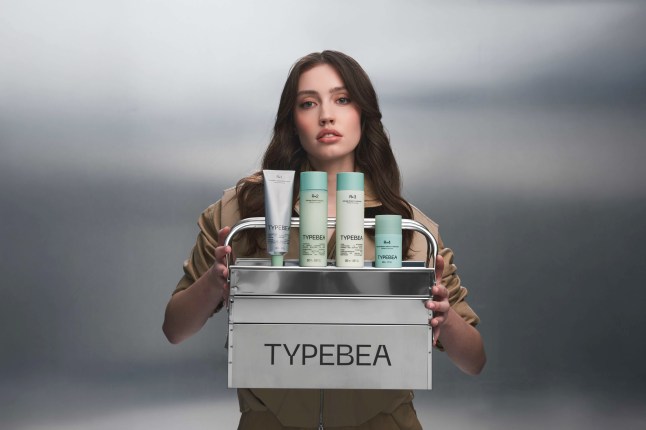
TYPEBEA Damage Repair Range
Formulated with TYPEBEA’s RDS Bond Technology, the Damage Repair range is a four-step system designed to reverse the effects of heat styling, colouring, chemical treatments and environmental damage without leaving hair weighed down. Included is R·1 Pre-Wash Damage Repair Mask, R·2 Damage Repair Shampoo, R•3 Damage Repair Conditioner and hero product, R•4 Intense Repair Leave-In Treatment.

Karen Millen Wool Blend High Neck Long Sleeve Bodysuit
Effortless elegance meets everyday practicality in this high-neck bodysuit from Karen Millen. Crafted from a soft-touch wool blend, it offers just the right amount of warmth without the bulk – ideal for layering through autumn and winter. The sleek bodysuit silhouette ensures a smooth, stay-put fit that works under everything from tailored blazers to chunky knits. Or wear it solo for a minimalist moment when the weather plays nice. A true wardrobe staple with style and substance.
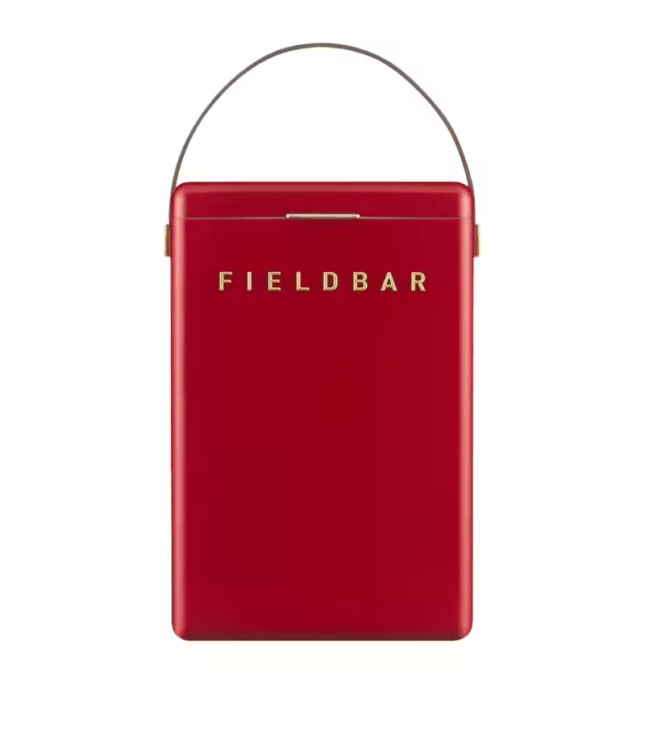
Fieldbar Red Drinks Box Cooler with Interchangeable Straps (10L)
Picnic season just got a serious upgrade thanks to Fieldbar’s ultra-chic cooler, now in a striking post-box red exclusive to Harrods. Whether you're chilling Champagne or keeping your margaritas frosty, this 10-litre cool box is as practical as it is pretty – fitting two wine bottles and two beer cans with ease. Designed with a scratch-resistant finish, reflective paintwork to reduce heat absorption, and interchangeable leather handles, it’s the kind of accessory that turns heads while keeping your drinks perfectly chilled. Blanket? Check. Fieldbar? Essential.

You're Looking Well Night Pill
Say goodnight to restless sleep with the You're Looking Well Night Pill – a one-capsule wonder designed to help you drift off and wake up feeling refreshed. Backed by science and packed with bio-active ingredients, this clever little supplement blends magnesium bisglycinate and L-theanine to calm the mind, ease you into slumber, and keep you sleeping soundly through the night. No grogginess, just good vibes. But it doesn’t stop there – grape seed extract helps fight signs of premature ageing, while copper and selenium work to shield your skin from oxidative stress. The result? Better sleep, brighter mornings, and a glow that goes beyond skincare.

M&S Collection Faux Leather Bowler Bag
Elevate your everyday with this sleek faux leather bowler bag – a refined choice for carrying your essentials in style. With its structured silhouette and secure zip-fastened main compartment, it’s as practical as it is polished. Whether you're heading to the office or out for brunch, this versatile piece adds a smart, sophisticated touch to any outfit.
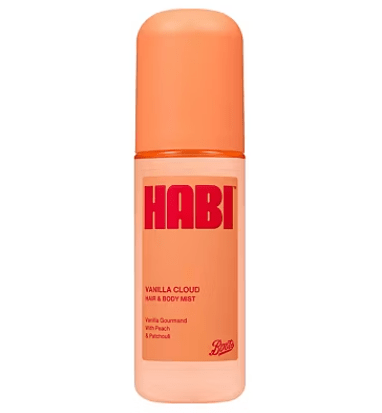
Boots Habi Hair & Body Mist in Vanilla Cloud
This lightweight spray contains water, alcohol denat and hydrogenated castor oil, which is scented. It is available in six scents, including Vanilla Cloud, Amber Bloom, Velvet Daze, Floral Dream, Citrus Souffle and Cherry Kiss. It is vegan and cruelty free, and safe to use on the body and hair.
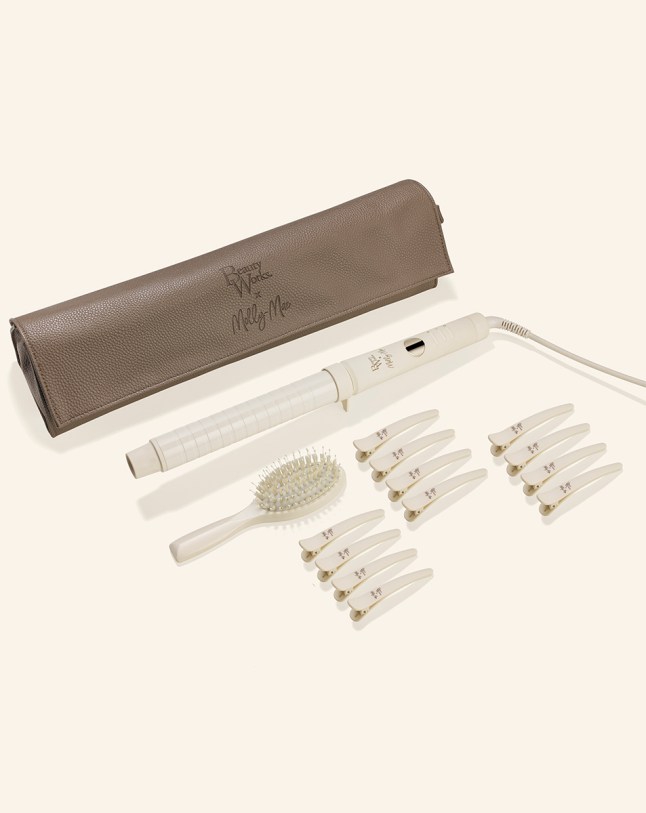
Beauty Works x Molly-Mae Curl Kit
Achieve Molly-Mae’s signature soft waves with the Limited Edition 32mm Curl Kit – a pro-level tool designed with an extra-long barrel to effortlessly style longer hair and extensions. Featuring ionic technology and adjustable heat settings, it creates smooth, frizz-free curls that last. The kit comes complete with luxe accessories, including a heat-resistant travel bag, styling mat, soft bristle brush, 12 curl clips, heatproof glove, and drawstring pouch.

Dunelm Soft & Cosy Luxury Brushed Cotton Duvet Cover and Pillowcase Set – Double
Perfect if you’re looking to make your bedroom a bit cosier for the season, this bedding set from Dunelm has been made from premium brushed cotton for a super soft, snuggly feel every time you crawl into bed. This Double bedding set comes with a duvet cover and two pillowcases.
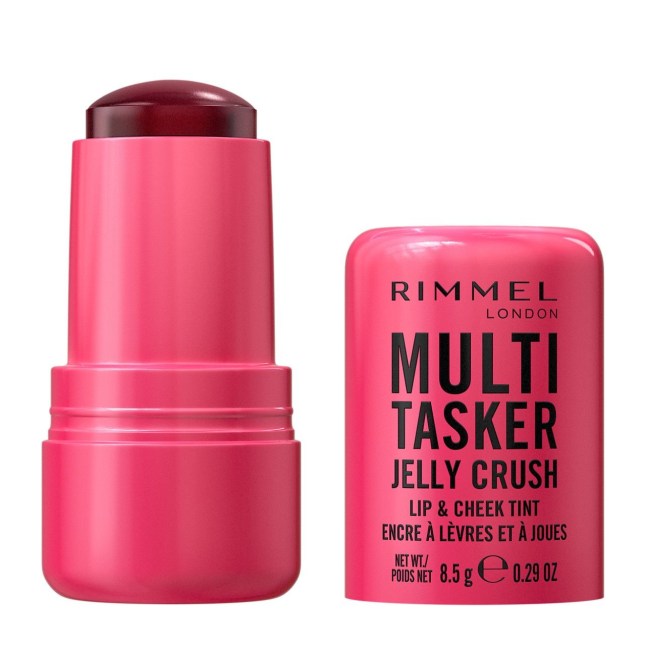
Rimmel London Multi-Tasker Jelly Crush Lip & Cheek Tint
Rimmel’s Jelly Crush Lip & Cheek Tint is your beauty shortcut for a fresh, natural glow in seconds. Available in four juicy shades, each one has a bouncy jelly texture, skin-loving niacinamide and fruity scents. Just tap on and blend with your fingers for dewy, long-lasting colour.

Yorkshire Tea Cherry Bakewell Brew 40 Tea Bags
Love tea? Love cake? This Cherry Bakewell Brew brings both together in one deliciously comforting cuppa. Inspired by the classic British treat, it’s a jammy, almond-infused Yorkshire blend that tastes just like your favourite slice – no fork required. Sweet, nostalgic and a little bit indulgent, it’s the perfect pick-me-up for those cosy moments when only tea and cake will do.
Follow Metro across our social channels, on Facebook, Twitter and Instagram
Share your views in the comments below
26 Sep, 2025 | Admin | No Comments
Tired all the time? A medical biochemist explains how to reset your body


Us Brits are a sleep-deprived bunch, with half of the nation surviving on just four hours of kip per night.
But we can’t simply go to bed earlier to feel less tired. A study by Aviva revealed that around one in three people in the UK suffer from insomnia and two thirds of adults have disrupted sleep.
So, what is causing this mass sleep problem, and how can it be solved?
Metro spoke to Jane Ollis, medical biochemist, environmental scientist, and founder of MindSpire, who listed seven reasons why you might constantly feel tired.
1. Your cortisol levels are too high

Cortisol, your body’s ‘stress hormone,’ ramps up at any sign of stress, keeping you on high alert, even if the ‘danger’ is just a busy day.
Think we can all relate to this one. Jane explains that ‘chronic high cortisol disrupts your sleep-wake cycle, making restful sleep harder to come by.’
To turn down cortisol before bed, she recommends deep breathing, or trying a quick meditation to let your body know it’s safe to wind down.
2. Your anxiety levels are high

As Jane so perfectly describes it, ‘anxiety is the brain’s late-night DJ’ and loves to play a set just as you’re settling in.
From replaying worries to going over the final details for that big meeting at work tomorrow, anxiety keeps us in a ‘high-alert state.’ Which ‘drains energy and makes it harder to relax,’ she says.
To quiet the mind, Jane advises jotting down a worry list or a quick to-do list before bed. This can help ‘clear mental clutter and keep your brain from reminding you at 2am’.
3. Your hormones are all over the place
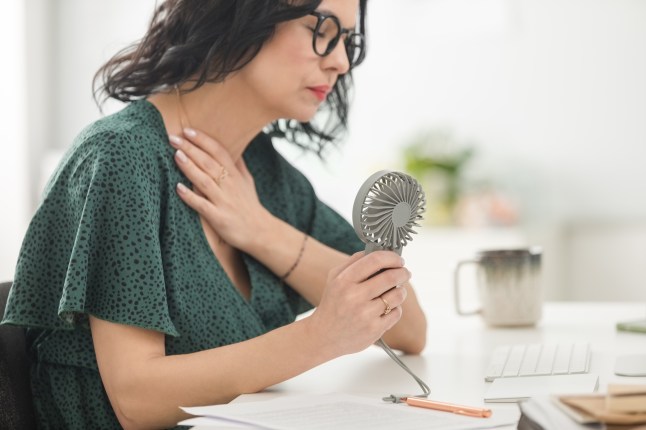
‘Fluctuating hormones, like those during your menstrual cycle or menopause, can seriously mess with sleep,’ states Jane.
She adds that low oestrogen – especially during menopause – can trigger hot flashes and restlessness, both of which can contribute to a poor night’s sleep.
The solution to these unpleasant but very recurring problems, you ask? Jane says that keeping your room cool, wearing breathable clothes, and sticking to a calming bedtime routine can help you sleep better during hormonal changes.
4. You’re spending too much time sitting down/not moving

Granted, there’s not much many of us can do about having to work for eight hours a day at our laptops – often confined to office chairs or sofas. We’ve got to pay the bills, after all.
However, there are ways that you can move your body more during working hours, whether it be taking regular standing and stretching breaks, or fitting in a walk around the block on your lunch hour.
‘Sedentary days tend to make for restless nights,’ explains Jane, who adds that ‘regular physical activity, especially moderate aerobic exercise, improves sleep quality by increasing time in slow-wave, deep sleep.’
She also says it helps reduce anxiety and low mood, both notorious for disrupting rest.
‘Just avoid vigorous workouts close to bedtime, as they can delay sleep onset,’ she adds
5. You’re absorbing too much blue light

‘Your circadian rhythm loves a consistent light-dark cycle,’ schools Jane.
However, blue light from screens, be it our phones, laptops, or TVs, delays melatonin release, keeping the brain awake long past bedtime. So, Jane says it’s important to ‘aim to switch off screens an hour or two before bed, or use a warm light setting.’ We know you’ve heard this one before, but you need to actually do it.
And in the morning? She says it’s best to ‘expose yourself to natural or yellow light to reset your body clock and signal it’s time to be awake.’ To do this, just get outside.
6. You’re eating too late
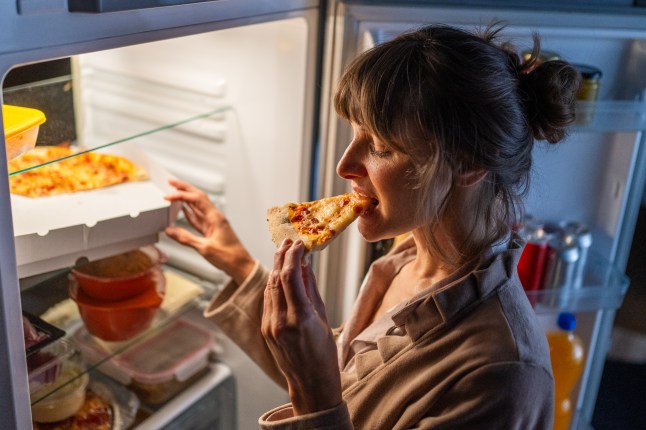
If you’re someone who loves a late-night snack – especially unhealthy choices like crisps, sweets, or other processed foods – just know that it might be contributing to your sleep problems.
Jane stresses: ‘Eating too close to bedtime can disrupt sleep as your body focuses on digestion instead of winding down. Aim to finish meals a couple of hours before bed to improve sleep quality.’
This gives your body a chance to shift into rest mode and helps avoid midnight wake-ups from indigestion
7. You don’t have a regular sleep routine

‘Routine is king.’ says Jane, who encourages everyone to ‘respect their internal clock.’
A regular sleep schedule is key to training your circadian rhythm, so going to bed and waking up at the same time daily helps your body fall asleep faster and stay asleep.
The expert’s advice?
‘Build a bedtime routine with calming activities, limit screens, and create a restful sleep environment to help keep your internal clock on track.’
Do you have a story to share?
Get in touch by emailing MetroLifestyleTeam@Metro.co.uk.
26 Sep, 2025 | Admin | No Comments
Man photographs his wife each day before work and people notice same thing
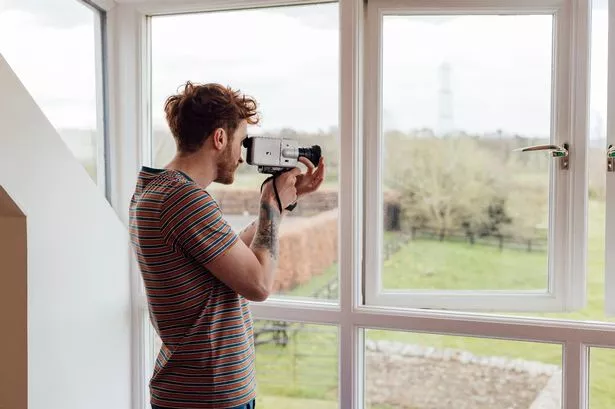
The man began photographing his wife through the window of their fourth floor flat every day as she left for work and when looking at the pictures, everyone noticed the same thing
26 Sep, 2025 | Admin | No Comments
Weekend Wishlist: 9 fashion and beauty pieces our writers are coveting this autumn

From TALA, UKLASH, Glossier, H&M and more. These are the items our fashion and beauty team have on their shopping list this payday weekend
26 Sep, 2025 | Admin | No Comments
Divorce lawyer warns against viral 'date them 'til you hate them' TikTok trend

You’ve heard of ‘enemies to lovers’, but now it’s time for ‘lovers to enemies’. TikTokers are dating people until they can’t stand them anymore – but is it a good idea?
Resident agony aunt Coleen Nolan has advice for a reader who knows how important it is to reconnect with her partner, but is feeling the pressure ahead of a night away







